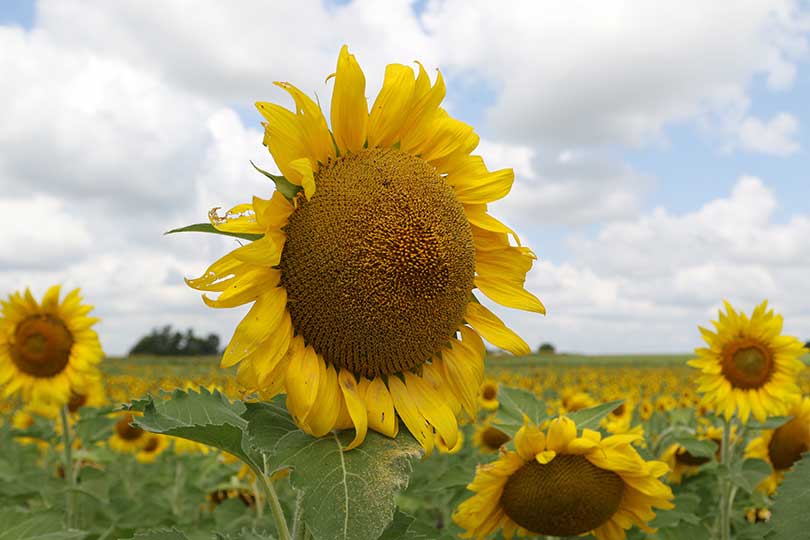Although alternative crops won’t replace top commodities, they will serve as drought-tolerant rotation options that can pay off when the price is right, according to AgriLife Extension experts.
Crops such as sunflowers, sesame and guar are viable options for farmers, especially in the Rolling Plains and High Plains, when it comes to replanting on a failed field. Adding those crops into a grower’s rotation also can benefit soil health and provide access to other markets when prices and industry demand, according to Extension agronomist Dr. Calvin Trostle.
Some farmers in Central Texas are harvesting sunflowers now and reporting good yields, Trostle said. One farmer in Ellis County reported that sunflowers are doing better than any other crop he planted this year.
Trostle noted sunflowers make a good rotation crop for cotton because they are drought-tolerant and have a wide planting window.
“Producers seem to like them, but it comes down to how many contracts are there to be filled,” he said. “The price goes up and down based on the number of acres the industry needs.”
West Texas cotton farmers have the option of planting guar, a drought-tolerant legume, as part of their crop rotation. Guar is used to produce food emulsifiers and lubricants for oil and gas drilling and fracking.
Experts say the number of alternative crop acres fluctuates with prices on the top commodities like corn, cotton and wheat.
“Any time you see dips in the commodity prices, you’ll typically see more alternative crop acres planted,” Dr. Clark Neely, AgriLife Extension specialist, told AgriLife Today.
Canola, a cool-season oilseed crop, is also growing in demand as an alternative crop as wheat prices have fallen. Winter canola grown in Texas has a price advantage because the majority of North American canola is spring canola.

